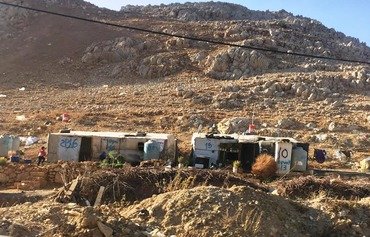Funding provided in 2018 to support the Jordan Response Plan for the Syria Crisis (JRPSC) amounted to only 38.4% of the amount requested.
Jordan received $954 million of the $2.48 billion in funding it requested in 2018 to fund the plan, a strategic partnership mechanism to help it bear the burden of the refugee crisis led by the Ministry of Planning and International Co-operation.
The plan includes several programmes to aid Syrian refugees and host communities and alleviate the financial burden of hosting the refugees.
Of the total amount of aid received under the plan, the education sector was allocated $94 million, the social protection sector $95 million, the health sector $110 million, the water sector $54 million and municipal services $39 million.
The government and the international community launched the Jordan Response Plan for the Syria Crisis (2018-2020) with a call for $7.3 billion over three years, an annual average of about $2.4 billion.
The $7.3 billion package aims to support the wellbeing of Syrian refugees and Jordanian host communities, while building national capacity.
Decline in international support
"The deficiency in funding reflects the reduced attention given by the international community to the Syrian crisis in view of the many developments that transpired in 2018," said economist Wajdi Makhamreh.
These include the reopening of the Jaber-Nassib border crossing between Syria and Jordan, and the Syrian regime’s recapture of vast swathes of territory, he told Al-Mashareq.
"The wane in support for this plan comes amid a general decline in international support for the Syrian crisis," he said, pointing out that this will have a negative impact on the countries hosting refugees, particularly Jordan and Lebanon.
"Jordan should continue to exert political pressure on donor countries to continue their programmes and assistance until the refugees return," he said.
Jordan has announced that it will have to resort to borrowing and obtaining soft loans to cover the budget deficit for the current year and reduce the public debt, which exceeds 650 million Jordanian dinars ($917 million).
"Jordan should not be left alone to cope with the burden of the Syrian refugee crisis," he said, stressing the need to continue assistance programmes, especially in the refugee camps.
Refugee camps host between 10 and 15% of Syrians in Jordan.
Expectations of return
International organisations must continue to implement refugee support programmes, especially in the education and health sectors, to avoid a gap in the provision of services, economist Mazen Marji told Al-Mashareq.
"The refugee crisis has not ended despite the developments in Syria," he said.
Marji stressed that the refugees must not be blamed for the economic pressures on Jordan.
"The one million Syrian refugees present in Jordan represent a huge purchasing power that played a role in stimulating the economy over the past years," he said.
Despite the pressures placed on some sectors, donor countries implemented several programmes that played a major role in alleviating the burden on Jordan, he added.
"I think that a large number of Syrian refugees will return to Syria in 2019, and consequently, the international community will not continue to provide assistance at the same pace," Marji said.
The exact number of refugees who have returned to Syria is not yet known, with some sources estimating more than 30,000 have gone back.
According to UNHCR Representative in Jordan Stefano Severe, this is a little exaggerated, and reflects the general traffic at the border, rather than the actual numbers of refugees returning.
"There is a slight misconception around who is a refugee returning and who is a Jordanian or Syrian just engaging in normal cross-border movement as part of normal immigration or trading procedures," he said.
Through its database, UNHCR was able to verify that 3,852 refugees returned to Syria between October 15th and December 1st, while a list shared by the Jordanian government put the number at 4,300.
"Although the numbers are different, there are also many Syrians who are not registered with UNHCR, and this is the main reason for the difference," Severe said.

![Zaatari is Jordan's largest Syrian refugee camp, accommodating around 80,000 refugees. [Photo courtesy of UNICEF]](/cnmi_am/images/2019/01/17/16234-Jordan-Zaatari-camp-600_384.jpg)






